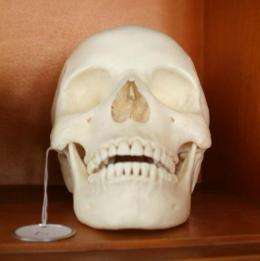Study finds significant skull differences between closely linked groups

In order to accurately identify skulls as male or female, forensic anthropologists need to have a good understanding of how the characteristics of male and female skulls differ between populations. A new study from North Carolina State University shows that these differences can be significant, even between populations that are geographically close to one another.
The researchers looked at the skulls of 27 women and 28 men who died in Lisbon, Portugal, between 1880 and 1975. They also evaluated the skulls of 40 women and 39 men who died between 1895 and 1903 in the rural area of Coimbra, just over 120 miles north of Lisbon.
The researchers found significant variation between female skulls from Lisbon and those from Coimbra. "The differences were in the shape of the skull, not the size," says Dr. Ann Ross, professor of anthropology at NC State and co-author of a paper describing the study. "This indicates that the variation is due to genetic differences, rather than differences of diet or nutrition." The researchers found little difference between the male skulls.
Specifically, the researchers found that the female skulls from Lisbon exhibited greater intraorbital distance than the skulls of Coimbra females. In other words, the women from Lisbon had broader noses and eyes that were spaced further apart.
This difference in craniofacial characteristics may stem from an influx of immigrants into Lisbon, which is a port city, Ross says. However, it may also be a result of preferential mate selection – meaning Lisbon men were finding mates abroad, or were more attracted to women with those facial features.
"Finding this level of dimorphism between groups in such close proximity to each other highlights the importance of examining human variation if we hope to make informed assessments of skeletal remains," Ross says. "That's true whether you're working in a biohistorical context or engaged in forensic analysis with law enforcement."
More information: The paper, "Craniofacial Sexual Dimorphism in Two Portuguese Skeletal Samples," is forthcoming in the journal Anthropologie.
Provided by North Carolina State University


















